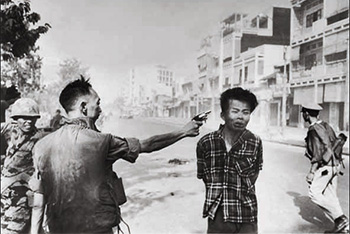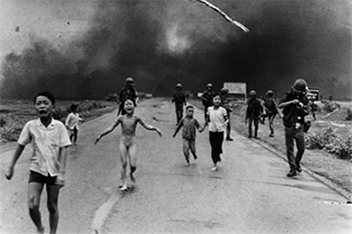Law of Armed Conflict
Beyond Black and White: Navigating the Gray Areas of Warfare
Demystifying the Law of Armed Conflict: A Guide to Responsible Warfare
Imagine yourself navigating a bustling city street, adrenaline pumping, every sense on high alert. Suddenly, chaos erupts – explosions rip through the air, gunfire echoes, and lives hang in the balance. This isn’t a Hollywood action flick, it’s the harsh reality of armed conflict, and it raises a crucial question: how do we fight wars while protecting civilians and upholding basic human rights?
Enter the Law of Armed Conflict (LOAC), also known as the Law of War, a complex web of international treaties, customary laws, and domestic regulations that govern wartime conduct. It may seem like a dry legalese reserved for military lawyers, but understanding LOAC’s core principles is essential for everyone, whether you’re a soldier deployed abroad, a concerned citizen following the news, or simply someone curious about how the world navigates the complexities of war.
Why Should We Care About LOAC?
In the fog of war, where emotions run high and quick decisions are demanded, the potential for unintended harm to civilians is ever-present. LOAC acts as a moral compass, reminding everyone involved – from soldiers on the ground to the highest levels of political leadership – that even amidst conflict, basic human dignity and legal frameworks must be respected.
For civilians: understanding LOAC empowers you to engage in informed discussions about military actions, hold your government accountable to uphold these principles, and advocate for peaceful resolutions to conflict.
For the media: understanding LOAC allows for more responsible reporting, avoiding sensationalism and ensuring accurate representation of complex wartime situations.
For servicemembers: knowing LOAC not only safeguards you from legal repercussions but also instills a sense of ethical responsibility, guiding your actions toward a more humane and responsible conduct of war.
Unveiling the Core Principles:
LOAC rests on four fundamental pillars:
- Distinction: Imagine a bustling marketplace – soldiers need to clearly distinguish between armed combatants and civilians, only targeting the former to minimize harm to innocent bystanders.
- Proportionality: Just because military force is necessary doesn’t mean it’s justified at any cost. LOAC demands proportionality, ensuring any harm inflicted on civilians is incidental and minimal compared to the anticipated military advantage.
- Necessity: Every bullet fired, every bomb dropped, should serve a specific military objective. Indiscriminate attacks or excessive force are strictly prohibited by LOAC.
- Humanity: Even enemy combatants deserve basic human rights. Torture, cruel treatment, and degrading practices are forbidden under LOAC, upholding the inherent dignity of every human being.
Navigating the Gray Areas:
While these principles seem straightforward, applying them in the battlefield’s dynamic chaos can be challenging. Imagine a sniper disguised in civilian clothing, or a rebel base located within a residential area. Here, judgment calls come into play, demanding quick decisions amidst incomplete information and immense pressure. This is why:
- Continuous training: LOAC knowledge isn’t a one-time event. Ongoing training equips soldiers and commanders to make informed decisions in the heat of the moment.
- Open communication: Doubts or uncertainties shouldn’t be silenced. Encouraging open communication within the chain of command fosters clarification and ensures informed actions.
- Seeking legal guidance: Legal advisors are an invaluable resource, providing real-time guidance on applying LOAC principles in specific scenarios.
The Human Cost of Violations:
While unintentional, LOAC violations can have devastating consequences, claiming innocent lives and eroding public trust in military operations. This is why adhering to LOAC isn’t just a legal obligation, it’s a moral imperative. It means:
- Protecting lives: Minimizing civilian casualties and respecting human rights.
- Upholding the law: Maintaining accountability and ensuring just consequences for violations.
- Preserving legitimacy: Fostering trust and cooperation with local populations, ultimately contributing to long-term stability.
Beyond the Battlefield: Supporting Responsibility:
Understanding LOAC doesn’t require military service. As a citizen, you can be a powerful advocate for responsible warfare by:
- Engaging in informed discussions: Educate yourself about LOAC principles and discuss its importance with friends, family, and community members.
- Demanding accountability: Hold your government and elected officials responsible for upholding LOAC in any military interventions.
Supporting organizations: Organizations like the Red Cross and Amnesty International actively promote and monitor humanitarian law globally.
Photos & Videos can Result in: “Law of Armed Conflict Accusations”
There were two photos that are thought to have determined the outcome of the Vietnam conflict:

The first photo – was the dramatic photo taken by Eddie Adams that later won the Pulitzer Prize in 1969 – and had nothing to do with U.S. servicemembers. That is the infamous photo of South Vietnamese General Nguyễn Ngọc Loan executing Nguyễn Văn Lém snapped by Eddie Adams on February 1, 1968 on a Saigon street.

The second photo – was of Phan Thị Kim Phúc running down a road near Trảng Bàng, Vietnam, after a napalm bomb was dropped on the village of Trảng Bàng by a plane of the Vietnam Air Force – NOT a U.S. airman. It was taken by Nick Ut on June 8, 1972 and also won a Pulitzer Prize.
Real-Life Scenarios: Bridging the Gap:
Understanding LOAC isn’t about memorizing legal jargon. Let’s consider a real-life scenario:
Imagine a drone strike targeting a suspected terrorist hideout within a densely populated village. While eliminating the target may be deemed militarily necessary, the potential for civilian casualties raises proportionality concerns. Here, LOAC principles come into play:
- Distinction: Can intelligence confirm the presence of only combatants in the hideout, or are there civilians unknowingly mixed in?
- Proportionality: Does the anticipated military advantage outweigh the potential civilian harm? Can alternative, less risky options achieve the same objective?
- Necessity: Is this the only way to neutralize the threat, or are there less harmful options available?
These are complex questions with no easy answers. Commanders face agonizing choices, burdened by the weight of potential consequences. This is why transparent communication between military leaders, legal advisors, and the public is crucial. Sharing the thought process, the considerations weighed, and the steps taken to minimize civilian harm fosters understanding and accountability.
Beyond the Battlefield: The Ripple Effect:
The consequences of LOAC violations extend far beyond the immediate casualties. They can:
- Erode public trust: When civilians become unintended targets, faith in military operations and governments plummets, fueling resentment and hindering long-term conflict resolution.
- Empower extremists: Violations provide propaganda fodder for extremist groups, recruiting individuals through claims of hypocrisy and injustice.
- Hinder long-term stability: When basic human rights are disregarded, rebuilding trust and fostering peace becomes incredibly difficult.
Remember: Every soldier, every commander, is not just a warrior, but also an ambassador representing their nation and its values. Upholding LOAC not only safeguards lives but also paves the way for a more peaceful and just world.
Beyond Borders: Recognizing Differences:
LOAC applies universally, but cultural and regional contexts add layers of complexity. Understanding diverse perspectives and customary practices is crucial to ensure responsible application. For example, religious sites and cultural artifacts enjoy special protection under LOAC, but their definition and significance can vary greatly across cultures.
Therefore, cultural sensitivity training plays a vital role in equipping soldiers to operate respectfully and avoid inadvertent offenses. Engaging with local communities, understanding their values and concerns, fosters trust and cooperation, ultimately contributing to mission success.
Taking Action: Resources and Support:
The journey towards understanding and advocating for responsible warfare doesn’t end here. Here are valuable resources to deepen your knowledge and get involved:
- Official Resources:
- Department of Defense Law of War Manual
- International Committee of the Red Cross provides comprehensive information on LOAC, including historical context, legal interpretations, and real-world applications.
- The United Nations Office of Legal Affairs (OLA) offers official documents, reports, and educational resources on LOAC.
- Legal Assistance:
- Case Studies and Training:
- The Lieber Institute for Law and Ethics offers case studies, simulations, and other resources to explore real-world LOAC scenarios and legal challenges.
- The International Law & Ethics Resource Center (IELRC): provides training materials, simulations, and other resources on LOAC and related topics.
- Non-Governmental Organizations (NGOs):
- Human Rights Watch (HRW): investigates and reports on human rights abuses, including violations of LOAC.
- Amnesty International: campaigns for human rights globally, holding governments and militaries accountable for LOAC violations.
Remember, you have the power to make a difference. By educating yourself, engaging in meaningful discussions, and supporting organizations working for responsible warfare, you can contribute to a world where conflict is conducted with greater respect for human dignity and the rule of law.
Disclaimer: This guide is intended for informational purposes only and does not constitute legal advice. For specific legal concerns, consult a qualified attorney specializing in international law or LOAC.
